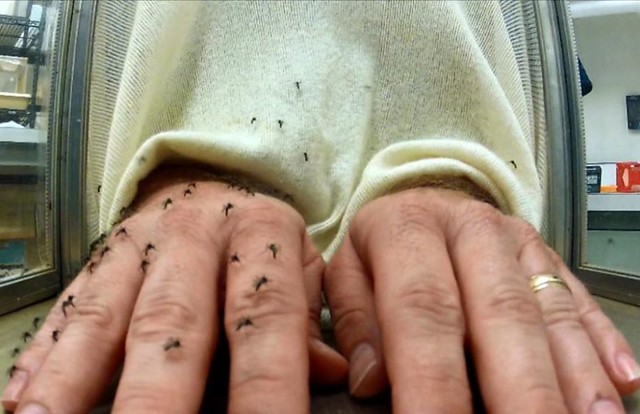Protecting the Military from Flying Foes
 For over 75 years, USDA scientists have been developing ways to protect the U.S. military around the world from powerful adversaries—mosquitoes and other biting arthropods that cause disease. Their work began in 1942 in a small USDA field laboratory in Orlando, where scientists made key discoveries about new chemicals for controlling these pests. At the time, the most effective repellents lasted only 2 hours, and the U.S. military needed a repellent that could protect for 10 hours. In 1952, testing in Orlando confirmed DEET was an effective repellent; it was soon adopted for use by the U.S. Army, became commercially available by 1957—and is still used widely today.
For over 75 years, USDA scientists have been developing ways to protect the U.S. military around the world from powerful adversaries—mosquitoes and other biting arthropods that cause disease. Their work began in 1942 in a small USDA field laboratory in Orlando, where scientists made key discoveries about new chemicals for controlling these pests. At the time, the most effective repellents lasted only 2 hours, and the U.S. military needed a repellent that could protect for 10 hours. In 1952, testing in Orlando confirmed DEET was an effective repellent; it was soon adopted for use by the U.S. Army, became commercially available by 1957—and is still used widely today.
Scientists at the Agricultural Research Service (ARS), USDA’s chief in-house research agency, have continued their search for better repellents ever since. They used the USDA database of 30,000 compounds to develop a model that used chemical structure data for predicting how long a repellent would keep pests away. This model predicted that some compounds would be more effective than DEET, and subsequent research confirmed some compounds did indeed repel pests more than three times longer than DEET.
No comments:
Post a Comment